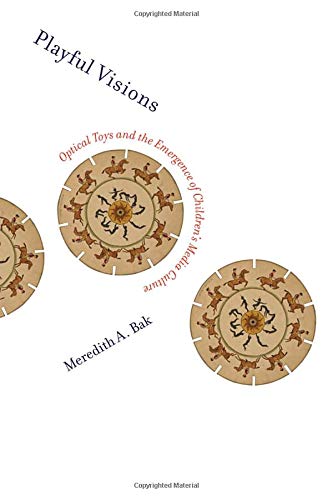

Most ebook files are in PDF format, so you can easily read them using various software such as Foxit Reader or directly on the Google Chrome browser.
Some ebook files are released by publishers in other formats such as .awz, .mobi, .epub, .fb2, etc. You may need to install specific software to read these formats on mobile/PC, such as Calibre.
Please read the tutorial at this link: https://ebookbell.com/faq
We offer FREE conversion to the popular formats you request; however, this may take some time. Therefore, right after payment, please email us, and we will try to provide the service as quickly as possible.
For some exceptional file formats or broken links (if any), please refrain from opening any disputes. Instead, email us first, and we will try to assist within a maximum of 6 hours.
EbookBell Team

0.0
0 reviewsThe kaleidoscope, the stereoscope, and other nineteenth-century optical toys analyzed as “new media” of their era, provoking anxieties similar to our own about children and screens.
In the nineteenth century, the kaleidoscope, the thaumatrope, the zoetrope, the stereoscope, and other optical toys were standard accessories of a middle-class childhood, used both at home and at school. In Playful Visions, Meredith Bak argues that the optical toys of the nineteenth century were the “new media” of their era, teaching children to be discerning consumers of media―and also provoking anxieties similar to contemporary worries about children's screen time. Bak shows that optical toys―which produced visual effects ranging from a moving image to the illusion of depth―established and reinforced a new understanding of vision as an interpretive process. At the same time, the expansion of the middle class as well as education and labor reforms contributed to a new notion of childhood as a time of innocence and play. Modern media culture and the emergence of modern Western childhood are thus deeply interconnected.
Drawing on extensive archival research, Bak discusses, among other things, the circulation of optical toys, and the wide visibility gained by their appearance as printed templates and textual descriptions in periodicals; expanding conceptions of literacy, which came to include visual acuity; and how optical play allowed children to exercise a sense of visual mastery. She examines optical toys alongside related visual technologies including chromolithography―which inspired both chromatic delight and chromophobia. Finally, considering the contemporary use of optical toys in advertising, education, and art, Bak analyzes the endurance of nineteenth-century visual paradigms.